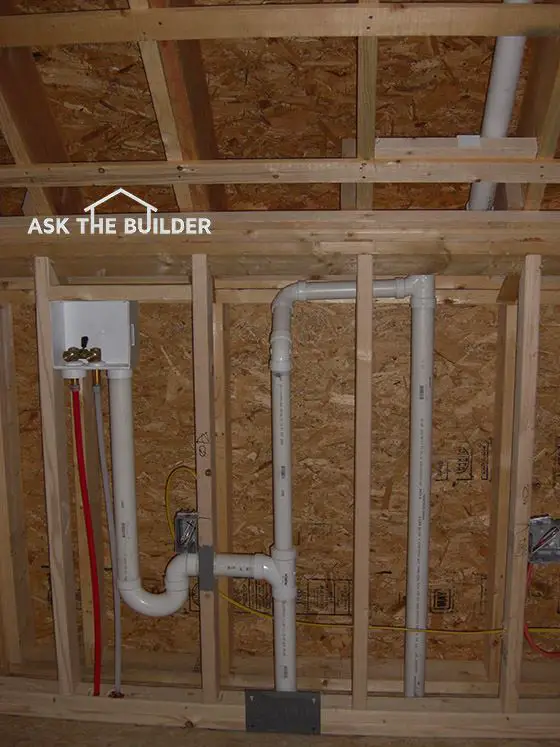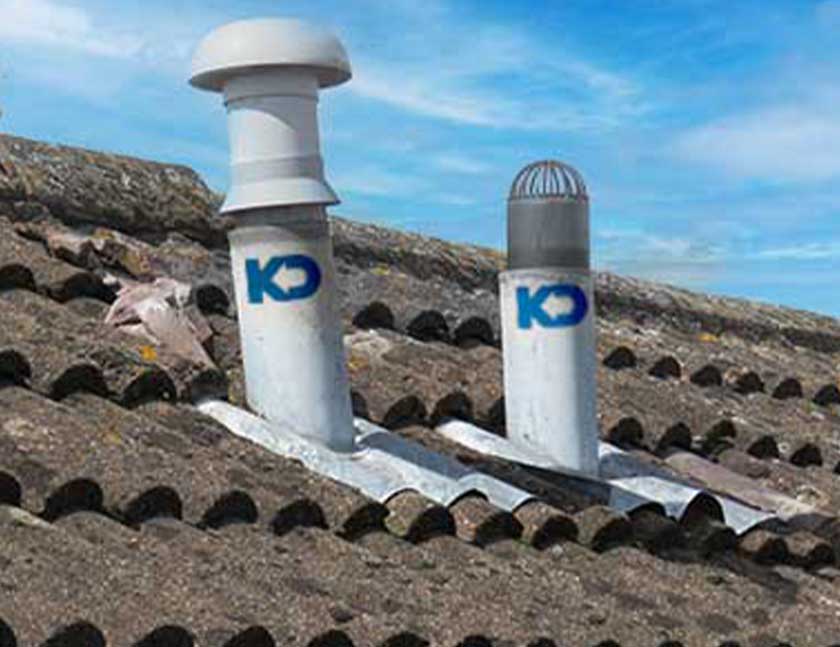The Critical Role of Adequate Ventilation in Plumbing Systems
The Critical Role of Adequate Ventilation in Plumbing Systems
Blog Article
They are making a number of good points on What Is A Plumbing Vent & How Do They Work? in general in the article beneath.

Appropriate air flow in pipes systems is frequently neglected, yet it is important for keeping the functionality and safety and security of your home's pipes. Air flow assists manage air pressure, avoid the build-up of hazardous gases, and make sure the effective elimination of waste. In this guide, we will check out the value of appropriate pipes ventilation, just how it functions, and the benefits it offers your plumbing system.
Understanding Air Flow in Plumbing
Air flow in pipes describes the network of pipelines that enable air to stream through the drain system. These vents serve multiple objectives, consisting of regulating atmospheric pressure within the pipelines, preventing drain gases from entering the home, and assisting in the smooth flow of wastewater.
How Ventilation Works in Pipes Equipments
Air Pressure Regulation
Appropriate air flow maintains balanced atmospheric pressure within the plumbing system. When water moves through pipelines, it displaces air. Without sufficient ventilation, this displacement can produce negative pressure, resulting in reduce drains pipes or siphoning of water from traps, which can trigger unpleasant smells to permeate right into the home.
Preventing Drain Gas Buildup
One of the most critical functions of plumbing vents is to stop drain gases, such as methane and hydrogen sulfide, from collecting within the home. These gases can pose significant health risks and are extremely combustible. Vent pipes enable these gases to run away safely outdoors.
Aiding in Waste Elimination
Air flow assists in the effective elimination of wastewater by protecting against airlocks in the drainage system. When air can flow openly via the vents, it permits water and waste to flow efficiently via the pipelines, decreasing the threat of clogs and backups.
Sorts Of Plumbing Vents
Main Stack Vent
The primary stack air vent, also known as the vent pile, is the key vent in a pipes system. It prolongs from the main drain line up with the roof, permitting gases to run away and fresh air to get in the system.
Branch Vent
Branch vents connect to the major stack vent and serve private fixtures, such as sinks, toilets, and showers. These vents ensure that each fixture has adequate ventilation to work correctly.
Air Admittance Valve (AAV).
An Air Admission Shutoff (AAV) is a one-way shutoff that allows air to enter the plumbing system without the need for a standard vent pipeline prolonging via the roofing system. AAVs are typically used in restorations or locations where mounting a conventional air vent is not practical.
Signs of Poor Ventilation in Pipes.
Slow Draining Fixtures.
If your sinks, tubs, or toilets are draining gradually, it could be an indicator of inadequate air flow. Poor air flow can produce a vacuum impact, making it difficult for water to drain appropriately.
Gurgling Seems.
Gurgling sounds coming from drains pipes are typically an outcome of air being sucked through water catches as a result of adverse pressure in the pipelines. This is a clear sign of inadequate ventilation.
Undesirable Odors.
Sewage system smells inside your home are a red flag that your pipes system is not correctly aerated. This could mean that drain gases are not being sufficiently aired vent outside, resulting in possibly dangerous conditions.
Usual Air Flow Errors.
Inadequate Vent Sizing.
Using undersized air vent pipelines can cause bad air flow and stress inequalities in the system. It's important to make use of vents that meet the specific demands of your pipes system.
Improper Vent Positioning.
Positioning vents as well much from the components they offer can lower their performance. Appropriate placement makes certain that air can flow freely and effectively with the system.
Disregarding Code Demands.
Building regulations give certain standards for plumbing ventilation. Disregarding these codes can cause a system that falls short to operate correctly and might lead to pricey repairs or health hazards.
Advantages of Appropriate Air Flow.
Enhanced System Efficiency.
Appropriately ventilated pipes systems run a lot more efficiently, with fewer blockages, faster draining, and less strain on the pipes. This effectiveness extends the life-span of the plumbing system.
Improved Air High Quality.
By avoiding drain gases from entering your home, proper air flow adds to far better indoor air high quality, making your living setting healthier and more comfortable.
Protecting Against Water Damages.
Adequate air flow assists prevent water from being siphoned out of traps, which can result in sewage system gases getting in the home and triggering water damages with time.
Actions to Guarantee Appropriate Ventilation.
Consulting Pipes Codes.
Always get in touch with local plumbing codes when designing or customizing your plumbing system. These codes supply the required guidelines for appropriate airing vent and ensure your system fulfills safety and security standards.
Normal Examination and Upkeep.
Routine examinations can help recognize potential ventilation problems prior to they become major troubles. Maintenance tasks, such as cleaning up air vent pipelines and looking for obstructions, are essential for maintaining the system in good working order.
Expert Setup.
For new setups or major adjustments, it's wise to hire a specialist plumber. They have the know-how to make sure the air flow system is appropriately designed and set up according to code.
Verdict.
Appropriate ventilation is an important part of any kind of pipes system, making certain that it operates effectively and safely. By comprehending the relevance of air flow, recognizing the signs of poor ventilation, and taking actions to maintain your system, you can avoid pricey issues and shield your home's air high quality.
4 Things You Should Know About Your Plumbing Vents
What Plumbing Vents Are
Also called a vent stack, a plumbing vent is a vertical pipe attached to your drain line that runs through your roof. The plumbing vent pipe, or plumbing air vent, removes gas and odors from your plumbing system and allows fresh air to enter the pipes, helping the water to flow out of the drain pipes.
What Plumbing Vents Do
Plumbing vents have two basic functions. One of which is to allow unpleasant smelling wastewater and sewer gasses to escape your plumbing system instead of entering your home. Plumbing vent pipes are typically located on roofs, away from windows, to ensure the fumes exit the home completely.
The other function of the plumbing vent is to move fresh air into your plumbing system. This helps move water through every plumbing fixture in your house, like toilets and sink drains. Think of the way in which you need to let a little air into the bottle as you pour soda in order to make the drink flow smoothly.
Different Types of Plumbing Vents
True vent: This is the most common vent option. In simplest terms, a true vent is a vertical pipe attached to your drain line that exits through the roof. They often function as the main vent that other fixtures can connect to. Re-vent pipe or auxiliary vent: Attached to the drain line near specific plumbing fixtures, re-vent pipes run up and over to connect to the main vent. Common vent: Two plumbing fixtures installed on opposite sides of a wall are typically tied into the vent stack using something known as a sanitary cross. Wet vent: This venting option operates as a drain pipe and a vent at the same time. Wet vent drainage systems drain water from one fixture while venting the air from another. Although they’ve been used for over 100 years, wet vent systems have only recently been added to the plumbing code in many areas. If you’re planning on installing one in a bathroom remodel, make sure you check your local code prior to construction. Loop vent: For free-standing fixtures like kitchen island sinks, loop vents are ideal. These vent pipes run under the floor, rise from the P-trap, and create a loop inside the cabinet sink. Air admittance valve: An AAV is a one-way mechanical valve typically installed at the site of the plumbing fixture. AAVs allow venting to occur without having to tie into a larger venting system. They’re ideal for venting fixtures where you aren’t able to easily connect to an existing vent system. Common Plumbing Vent Issues
Although vent pipes typically don’t have water flowing through them, they’re still subject to many typical plumbing issues. For example, clogs are one of the most common problems associated with sewer vent pipes. If your vent pipe gets clogged, all of your plumbing fixtures tied into the vent stack will be affected.
A sink with a slow drain that bubbles and gurgles or a strong sewage smell around your toilet are both indicators that your toilet vent pipe is clogged. Because most vent pipes exit through the roof, old leaves, twigs or even a bird’s nest could be clogging the pipe.
Clogs in your vent pipe system cause a buildup of negative pressure, meaning that water won’t be able to flow out of your home very well. It’s similar to putting your finger over the opening of a straw to trap water inside. When you remove your finger, the water is able to flow out of the straw.
If you suspect you have any blockage in your vent, make sure you have a professional come examine the situation. Left unchecked, a blocked air vent can lead to other costly repairs, like leaks and sediment buildup.
Under Pressure
Pipe vents are essential aspects of a home’s plumbing system. Owning a home means learning about all sorts of things you never put much thought into before. But by understanding as much as you can about the important systems of your home, you can keep those budgets intact and those anxiety levels low.
https://www.homeserve.com/en-us/blog/home-improvement/plumbing-vents/

I have been very occupied with What Are Plumbing Vents and Why Are They Important? and I really hope you appreciated the new blog post. Are you aware of another person who is intrigued by the subject? Why not share it. Thanks a lot for your time invested reading it.
Schedule Free Estimate Report this page